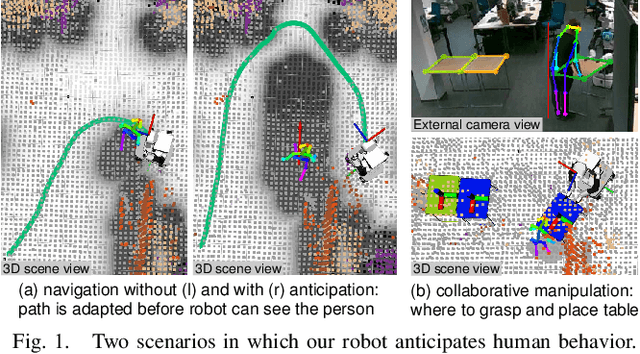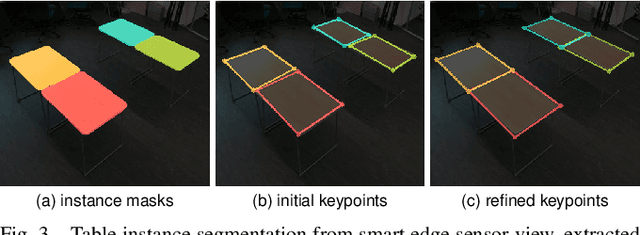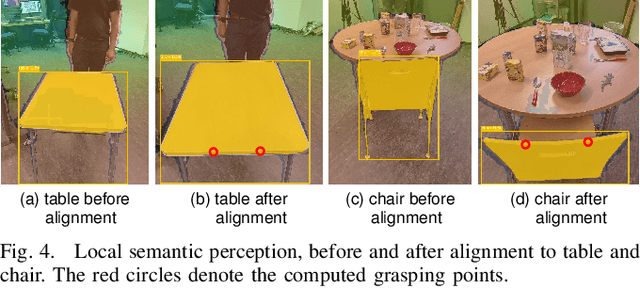Julian Hau
Anticipating Human Behavior for Safe Navigation and Efficient Collaborative Manipulation with Mobile Service Robots
Oct 07, 2024



Abstract:The anticipation of human behavior is a crucial capability for robots to interact with humans safely and efficiently. We employ a smart edge sensor network to provide global observations along with future predictions and goal information to integrate anticipatory behavior for the control of a mobile manipulation robot. We present approaches to anticipate human behavior in the context of safe navigation and a collaborative mobile manipulation task. First, we anticipate human motion by employing projections of human trajectories from smart edge sensor network observations into the planning map of a mobile robot. Second, we anticipate human intentions in a collaborative furniture-carrying task to achieve a given goal. Our experiments indicate that anticipating human behavior allows for safer navigation and more efficient collaboration. Finally, we showcase an integrated system that anticipates human behavior and collaborates with a human to achieve a target room layout, including the placement of tables and chairs.
Object-level 3D Semantic Mapping using a Network of Smart Edge Sensors
Nov 21, 2022Abstract:Autonomous robots that interact with their environment require a detailed semantic scene model. For this, volumetric semantic maps are frequently used. The scene understanding can further be improved by including object-level information in the map. In this work, we extend a multi-view 3D semantic mapping system consisting of a network of distributed smart edge sensors with object-level information, to enable downstream tasks that need object-level input. Objects are represented in the map via their 3D mesh model or as an object-centric volumetric sub-map that can model arbitrary object geometry when no detailed 3D model is available. We propose a keypoint-based approach to estimate object poses via PnP and refinement via ICP alignment of the 3D object model with the observed point cloud segments. Object instances are tracked to integrate observations over time and to be robust against temporary occlusions. Our method is evaluated on the public Behave dataset where it shows pose estimation accuracy within a few centimeters and in real-world experiments with the sensor network in a challenging lab environment where multiple chairs and a table are tracked through the scene online, in real time even under high occlusions.
 Add to Chrome
Add to Chrome Add to Firefox
Add to Firefox Add to Edge
Add to Edge